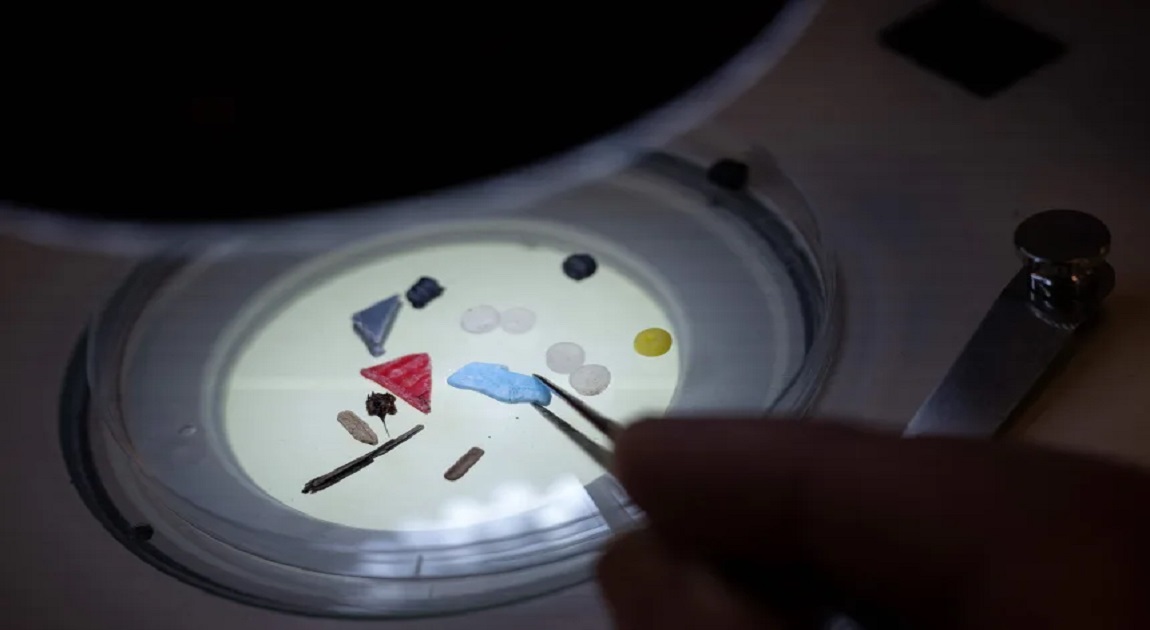Microplastics have now been detected in human reproductive fluids, including semen and follicular fluid, according to new research presented at the 41st Annual Meeting of the European Society of Human Reproduction and Embryology in Paris.
The study, conducted by scientists at Next Fertility Murcia in Spain, reveals the growing extent of microplastic infiltration into the human body, raising fresh concerns about their potential impact on reproductive health.
The study analyzed samples from 43 individuals—25 women and 18 men—undergoing fertility treatments.
Microplastics were found in 69% of the follicular fluid samples and 55% of the semen samples. Follicular fluid is the liquid surrounding an egg within an ovarian follicle.
Dr. Emilio Gómez-Sánchez, lead author and director of the assisted reproduction laboratory at Next Fertility Murcia, said the findings, though not entirely unexpected, were alarming due to the prevalence.
“What did surprise us is how widespread it is. This is not an isolated finding — it appears to be quite common,” he stated.
Microplastics are fragments of plastic less than 5 millimeters in length, often resulting from the breakdown of larger plastic items.
They can enter the human body through ingestion, inhalation, or skin contact, and once inside, they can circulate through the bloodstream, potentially reaching vital organs—including reproductive organs.
In the study, nine types of microplastics were identified in the reproductive fluids. In follicular fluid, more than half the samples contained polyamide (nylon), polyurethane, and polyethylene.
Other common plastic types such as polytetrafluoroethylene (PTFE or Teflon), polyethylene terephthalate (PET), polypropylene (PP), polyvinyl chloride (PVC), and polylactic acid (PLA) were also detected.
In semen samples, 56% contained PTFE, a material widely used in non-stick cookware. Overall, the concentrations were low—usually one or two particles per sample—though follicular fluid showed higher levels than semen.
To reduce contamination risks, researchers stored samples in glass containers and also tested the collection materials.
The study remains in abstract form and has not yet undergone peer review, but it adds to a growing body of evidence showing the presence of microplastics in human tissues—including the lungs, brain, placenta, testicles, and stool.
While the long-term effects of microplastics on human health remain unclear, experts warn that chemicals associated with plastics—such as plasticizers and additives—can disrupt hormones, trigger inflammation, and contribute to certain cancers.
Dr. Matthew J. Campen, a pharmaceutical sciences professor at the University of New Mexico who has studied microplastics in the brain and testicles, described the findings as expected but significant. “This sets the stage for more advanced studies on the relationship between plastic exposure and reproductive fitness,” he said.
Though microplastic concentrations found were relatively low, the discovery highlights the pervasive nature of plastic pollution and its potential implications for human fertility and overall health.













-20260106082251.webp)

-20260106073954.webp)













-(2)-20260102070806.jpeg)
-(25)-20251122062715-20260105041159.jpeg)






